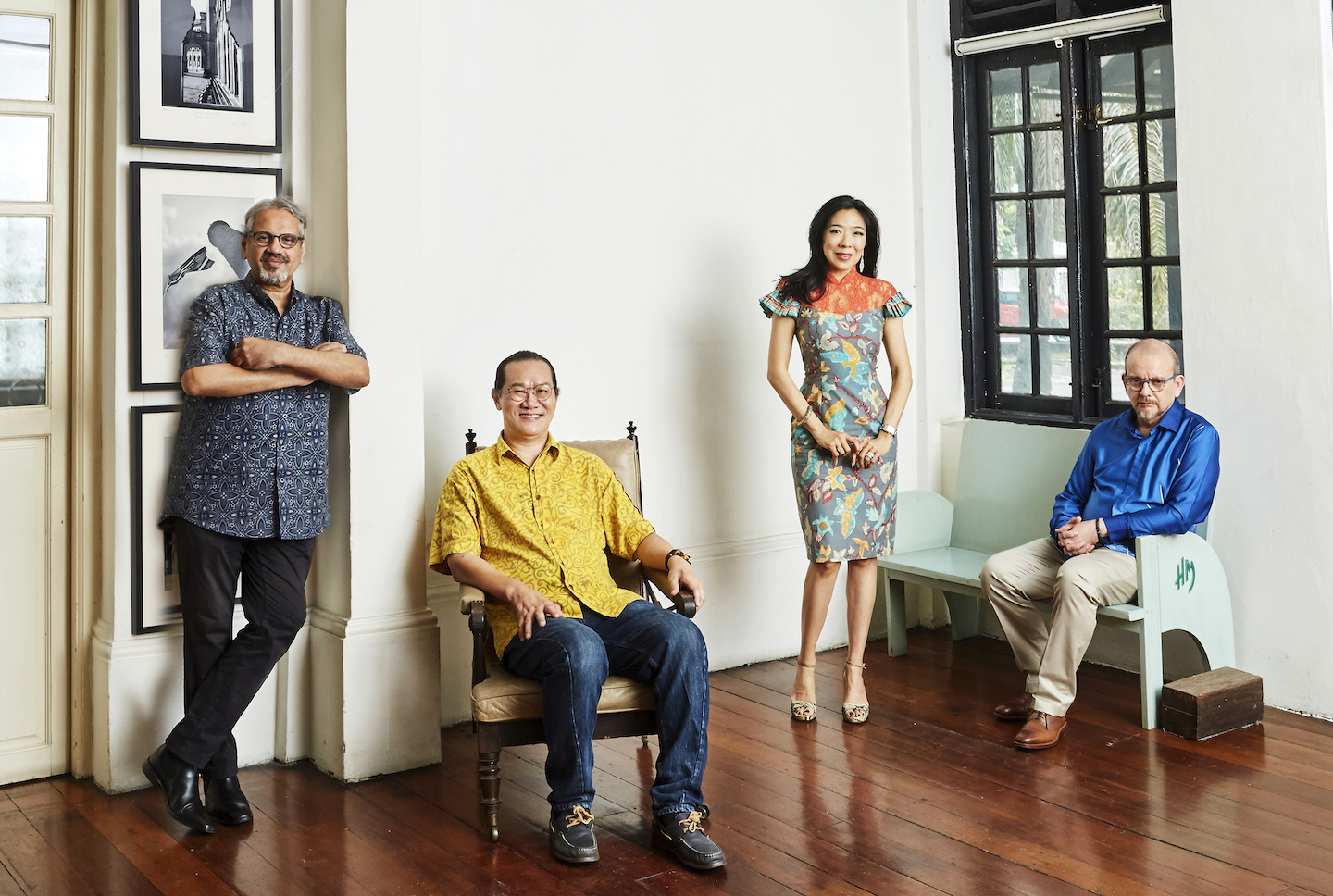
The new cohort of council members (from left): Anand, Take Bane, Wei-Ling and Zahim (Photography by SooPhye)
Soar above Kuala Lumpur and the view would be of a complex chessboard of construction. Towers race each other to the heavens, straddling older, shorter structures that might be erased from the landscape to make way for more modern monoliths. Once an uncommon quest for glory, the rapid spawning of skyscrapers now reflects the continuous tension between shrinking real estate and burgeoning ambition.
In chess, the height of a piece suggests its stature but any player worth his salt will tell you that even the humble pawn, cleverly despatched, can be a powerful weapon. It is a metaphor mirrored around the city. Progress is welcome, but it need not trample on the traditional nor dismiss it as inferior. The bones of many old buildings are far from brittle and, oh, if those walls could talk.
Coaxing out some of their stories is what Badan Warisan Malaysia (BWM), or the Malaysian Heritage Trust, does. The non-governmental organisation was formed in 1983 by Tan Sri Datuk Harun Hashim, Tan Sri Mubin Sheppard and award-winning architects Chen Voon Fee and Prof Dr Jimmy Cheok-Siang Lim to promote the conservation and preservation of historic buildings and places. Their cause has been taken up by a new generation, a recently inducted council. Lim’s daughter, gallery owner Wei-Ling, took over the mantle of council president from Elizabeth Cardosa while film director Datuk Zahim Albakri stepped up as vice-president.
We meet early on a weekday morning at the Heritage Centre headquarters, a 1920s colonial bungalow on Jalan Stonor, KL. Architects and fellow council members Anand Krishnan and Lim Take Bane join us and, within minutes, the conversation turns to all things heritage and continues at full throttle for the better part of an hour.
It starts during a photo shoot at Rumah Penghulu Abu Seman, one of the oldest surviving examples of a traditional Malay house and vernacular architecture. Built in stages between 1910 and the 1930s as the home of the local village headman in Kampung Sungai Kechil, Kedah, it was relocated to the Heritage Centre’s premises in the mid-1990s to be painstakingly reconstructed and restored. Its timber facade is now framed by lush native plants that populate the adjacent heritage garden and the steel-and-glass superstructures of the Petronas Twin Towers in the background. It is a snapshot of the paradoxes that make up KL: old and new coexisting side by side.
badan_warisan_malaysia_heritage_centre_at_no_2_jalan_stonor_1995_by_bwm.jpg
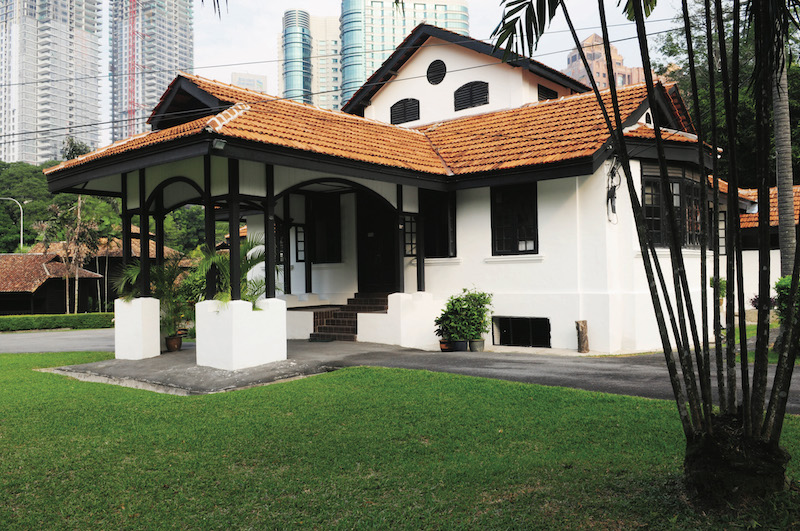
As we admire the freshly oiled hardwood — “Maintaining a structure like this is costly and laborious,” remarks Wei-Ling — original decorative carvings and unusual layout of the Rumah Penghulu, complete with makeshift jail in the front, the subject of renowned local architecture arises. An example put forward is the old Terminal 1 at Subang Airport, an open configuration with floating concrete shell roofing upheld by mushroom-shaped columns.
“It should really have been maintained — I daresay it was one of the best airport terminals in the world at the time,” says Zahim, whose mother’s active involvement in BWM makes him a legacy member too. “It was built in the 1960s and was beautiful when most terminals were typically just functional.”
Courtesy of their parents’ neoteric interests, he and Wei-Ling spent their individual childhoods traipsing along on weekend excursions to historical sites or attending seminars on the subject. The nascent heritage landscape meant there were few who lobbied for the preservation of significant buildings as the lure of development dug deep and uprooted a way of life and entire eras.
“All these magnificent old shophouses and colonial mansions were being demolished in the early 1980s and dad would be so stressed out about it,” recalls Wei-Ling. “He was vocal and outspoken on these matters, which didn’t always win him friends. But his intense passion for conservation rubbed off on me, gave me a respect for heritage and highlighted the need to protect it for the generations to come.”
Balancing the past and progress
It is a common belief that people shape stories. However, the inverse is just as true; stories hold influence over their audience, thrusting them into settings or plots that in turn shape future events. This symbiotic relationship plays out not just in the tales of history or culture, but also architecture and place — BWM’s primary sphere of concern.
“Built heritage refers to individual or groups of buildings or structures built by our forefathers that embody their great ambitions and visions. They’re almost like stage sets,” says Take Bane. “We live our lives within them, and the best have a well-defined sense of place. Japan and Thailand, for instance, have distinct codes that impart a sense of place unique to them.”
Malaysia’s codes are varied, he continues, spanning modern edifices such as KLCC to softer, older cues such as the five-foot ways and heritage shophouses, all of which contribute to our national story. Not any old building would qualify for the heritage title; criteria include architectural or artistic merit and association with persons or events of significance.
“An ordinary kampung house might not qualify, but the house Tun Mahathir was born in would,” Take Bane elaborates. “Sometimes, built heritage could refer to a space as a collective whole — Jonker Street in Melaka, for example. It took centuries to create that ambience. Some reject it as a remnant of colonisation but it’s a part of the history of a place and shouldn’t be erased. This is not a situation unique to us; in the UK, the Welsh were upset about the castles that marked England’s dominance over them, but when they began maintaining and promoting them, they became fantastic tourist attractions.”
“And now, maybe because people study or travel abroad more and see the potential of heritage overseas, there are many who are motivated to see the same happen here,” says Zahim. “Look at England, which is so rich in history with thousand-year-old cathedrals or castles down the road or around every other corner. The more exposure to these concepts Malaysians have, the more they realise and appreciate our local treasures.”
Heritage preservation is incentivised by its role in a locale’s social and cultural tapestry, as well as revenue generation.
“I wanted to visit the house Anne Frank hid in during World War II while in Amsterdam and the crowd was so large, you couldn’t even get in,” says Wei-Ling. “We need more of that here.”
“And for that, you need a watchdog to ensure our built heritage is protected,” adds Anand. “We don’t need to reinvent the wheel to do this; there are many models or countries whose solutions we could borrow. Air rights, for instance; if you own a heritage building and want to develop something in its place, you are given air rights or transfer of development rights to build it elsewhere. The idea is to recognise what’s of value. That’s where NGOs like us come in.”
Four approaches can be applied on heritage sites or buildings: preservation, restoration, adaptive reuse or a combination of two or all of the above. BWM’s advocacy in this arena resulted in the 2003 amendment to the Town and Country Planning Act, later recast as the National Heritage Act 2005, which provides for the conservation and preservation of what was deemed to be items or structures of natural heritage.
Projects that have benefited in the past from BWM’s involvement include the internationally acknowledged restoration of Stadium Merdeka in KL; an exhibit of a model restoration scheme at 8 Hereen Street in Melaka as the state’s earliest shophouse typology; and the restoration of Suffolk House in Penang, Malaysia’s sole surviving Georgian mansion.
stadium_merdeka_2_aerialviewafter_0308_by_bwm.jpg
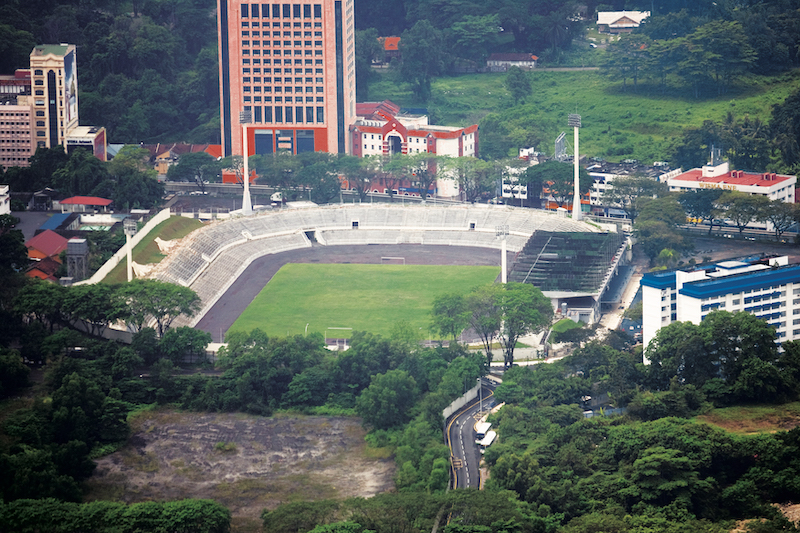
The new council faces its own set of challenges, including recent controversies surrounding KL’s SMK Convent Bukit Nanas (CBN),
the 122-year-old school threatened with relocation upon the imminent expiry of its land lease, and the demolition of heritage buildings Maybank Lodge and the Jelai Resort in Fraser’s Hill to make way for a 15-storey resort and spa.
“It was wonderful that so many Malaysians came together to save CBN,” says Wei-Ling. “It showed just how many people cared, beyond the alumni. That gives us hope that the younger generations are interested in preserving the legacy and built heritage of Malaysia. In our parents’ time, there were fewer voices on the ground calling for these considerations, just a small group of warriors. Whereas, today, we are lucky because social media allows us to reach more people.”
“In fact, I think if it wasn’t for social media, CBN would have had a tougher time of it,” shares Anand. “Social media helped galvanise the public to take a stand and make their voices heard. Fraser’s Hill is another case. Overnight, these buildings were demolished, to the surprise of residents, to clear the land for a huge new resort that doesn’t fit the ambience of the place. Context is a major part of these decisions. You can’t just knock down old buildings in a forested hill station and put up a generic multi-storey structure in their place.”
“And if you look into the history of Fraser’s Hill and the public’s relationship with it, how it returns visitors and residents to a slower pace of life with fresh air and abundant nature — these are the very things you will lose with overdevelopment, which the new resort opens the way for,” picks up Wei-Ling.
“The key thing is that every city in the world should have a unique identity based on its context, like how Penang is so different from KL. You need to show empathy for and sensitivity to the unique character of a place or you end up with homogenous places with no distinguishing or identifying traits,” says Anand. “We don’t have many hill towns in Malaysia and we need to be careful lest we destroy them.”
This does not mean a blanket sacrifice of progress. Development has to be judicious, contextual and take into account the people who interact most frequently with a locale — its residents.
“Heritage can coexist with development,” says Anand. “Not everyone sees the connection, or the value in coexistence; they feel it’s only about progress and, to that end, build aggressively. But coexistence needs to be emphasised because, without it, we will have nothing down the road, no tangible connection to our past.”
And coexistence can translate into development within the perimeters of heritage, through adaptive reuse, for instance. KL is seeing increasing instances of this, with old shoplots on Jalan Sultan, Jalan Panggong and Petaling Street rejuvenated by boutique businesses or bars and cafés. Such places have layers of history, each specific to an era, that tell the story of the city and its evolution.
“It’s a great approach — you end up having different memories of the same place as its use is adapted over generations, with the building gaining a new lease of life each time,” says Take Bane.
Of plans and limitations
Parlaying heritage into an essential component of nation building and revenue generation will involve more work than the volunteers on BWM’s council can handle themselves. On the agenda for the near and long term are proposals to further expand the heritage garden, initiate culture mapping projects and grow a repository of oral, literary, drawn and digitised references in addition to its usual advocacy, preservation and conservation activities.
central_market_2004_by_bwm.jpg
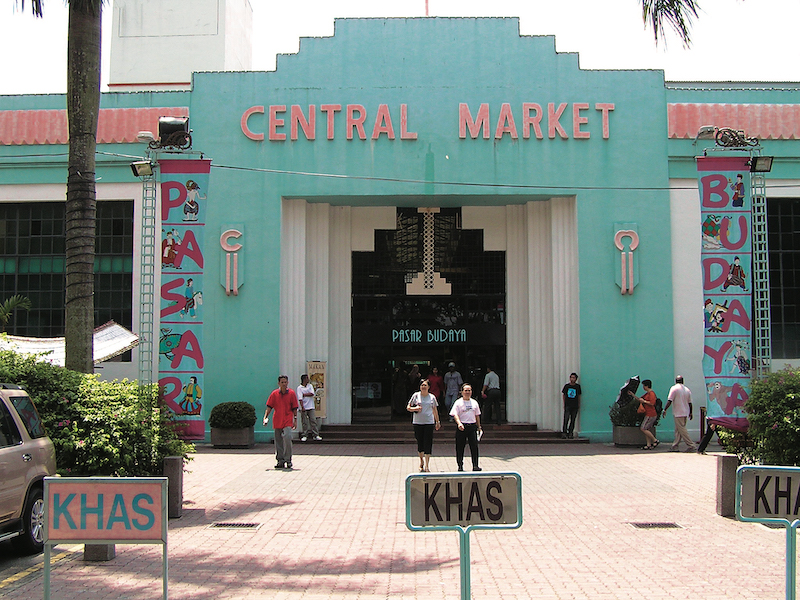
“The garden is something we are particularly excited about,” says Wei-Ling. “We are looking to expand our collection of indigenous plants in collaboration with Rimba Ilmu, the botanical garden at Universiti Malaya. We want to turn it into a community garden with local herbs and flora, and host workshops to teach people about their use in cooking, medicinal value or benefits for their own gardens.”
“It’s very popular as a green lung or oasis in the heart of the city,” says Take Bane. “People swing by after visiting KLCC and the juxtaposition is incredible, from the ultra-modern to the bucolic. Collectively, alongside the Heritage Centre and Rumah Penghulu, they show that heritage is not an isolated, static thing, but is dynamic.”
So enthusiastic are the four representatives that their voices climb over each other’s as they pick up and pursue their colleagues’ threads of thought. The conversation veers towards the chaotic sometimes, but the energy in the room radiates with optimism.
“Culture mapping is another area we are hoping to invest in heavily,” Wei-Ling enthuses. “There are so many interesting towns in Malaysia that should be commemorated. I recently went on a tour of Batu Arang and was so taken by the entire experience. It has existing coal mines, which gave it its name, and a demolished brick manufacturer — you can still see the relics. And since it was an outpost for the British, with one of the earliest railway stations they built to transport the coal, there’s a lot of colonial or Art Deco influence in the architecture. Some of these buildings are falling into disrepair, so we want to embark on a cultural mapping project of the town to help revive it. It’s just 45 minutes out of KL, which is great for a day trip.”
“Sungai Lembing in Pahang is another possibility,” says Anand. “It has an old tin mine with shophouses from the 1920s and 1930s that are still in use. The whole town is lovely, with good bread and coffee to boot.”
“Malaysia is rich in places like this. You don’t have to go far to see remnants of our tin mining heritage — Sunway Lagoon was built in a former open tin mine, and cues from this are still visible in the theme park and hotel,” says Zahim.
“And these are the narratives we need to keep alive,” continues Take Bane. “Travellers from overseas don’t want to spend their time here in shopping malls. They want to explore the multiple facets of Malaysia, from the towns and streets to its history and everyday life here, and these are some of the experiences we can enhance.”
Tourists are not the only audience the BWM council is considering. There are plans afoot to build various repositories for posterity, from recording the oral history of the city as told by prominent Malaysians and digitising the profound collections within the onsite Chen Voon Fee Resource Centre to reviving the Mubin Sheppard Memorial Prize for Measured Drawing.
“The prize has been on a hiatus for several years but we intend to bring it back later this year,” says Anand, who will be overseeing its revival. “Measured drawings are painstaking to put together but we are hoping to use this as an avenue to eventually start collecting drawings and records of old buildings. There will be good prizes to attract participation, so this will be a win-win situation.”
“It’s a good, even necessary, initiative so that, in the absence of an actual building, you can create a model of what it looked like or recreate it entirely,” explains Take Bane.
“You could 3D print it!” jokes Wei-Ling, to laughter from the group.
Old buildings have largely been the focus of built heritage, but the reactionary response — advocating to save or restore them when under threat — is unsustainable. Instead, BWM is adopting a pre-emptive stance by identifying the heritage buildings of tomorrow and protecting their status as they mature as a sort of ongoing or living heritage project.
“As time progresses, the buildings we grew up with, which were modern in our parents’ or our time, are going to be historically relevant,” remarks Wei-Ling. “They should be preserved, archived and included in a national register of iconic heritage buildings and communities.”
cultural_mapping.jpeg
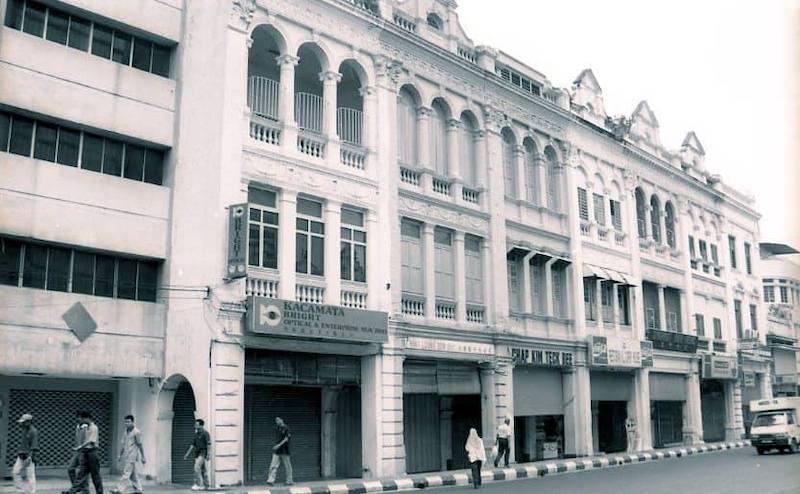
“There are so many examples of them in Kampar, Pudu and New Town in Petaling Jaya,” says Anand. “They are not on the radar yet, owing to their age, but we are calling attention to them as we see them being threatened with demolition. If we lose these, a whole swathe of time will be lost in our landscape. These are places that will some day be national treasures and we need to proactively look out for them.”
“I’m particularly concerned about Bukit Nanas,” says Take Bane. “Developers are eyeing the area because it’s prime real estate but there are beautiful buildings there that should be gazetted, and they all contribute to a distinct sense of place.”
One of the solutions proposed is designing a heritage toolkit as a one-stop resource for those interested in acquiring heritage status for potential buildings or sites. The guide will contain details on relevant government departments and acts, rights and notes on approaches such as adaptive reuse.
“Currently, there are many ad hoc efforts on preservation and conservation,” says Anand. “We would like to make this process more cohesive so everything can be tackled holistically.”
The main hurdles they face in the pursuit of these grand ambitions are funding and manpower. The restrictions imposed by the Covid-19 pandemic have curtailed most fundraising initiatives or sources. BWM has survived so far, thanks to the generosity of individual and corporate sponsors, including Ekuiti Nasional Bhd, International National Trusts Organisation, KSK Group, Think City Institute, Quill Holdings and Tenaga Nasional. However, continuous funding is urgently required to ensure the sustainability of the organisation’s work.
Then there is a desperate need for willing hands to do said work. All manner of skill sets will find a grateful reception at BWM, which is seeking volunteers ranging from historians, tour guides, researchers, curators and architects to accountants, IT wizards, writers and marketeers. Apart from the exposure to heritage issues and institutions and access to BWM’s many activities and resources, volunteers will play an active part in securing the built heritage landscape for future generations or encouraging an appreciation for these treasures.
“The challenges we face are similar to those of the previous generation of conservationists, but with greater intensity,” says Anand. “Imagine a room in which more and more people keep entering. That is what’s happening here. As development increases and density grows, so saving something takes that much more work. Our cause is more urgent than ever and we need to reach as many people as possible.”
Youth, they decide — they need youth to lead the charge online.
“It’s one of the best ways to broadcast calls to action and get the public involved in our cause,” Anand muses. “Maybe we should start a TikTok account.”
This article first appeared on June 7, 2021 in The Edge Malaysia.


